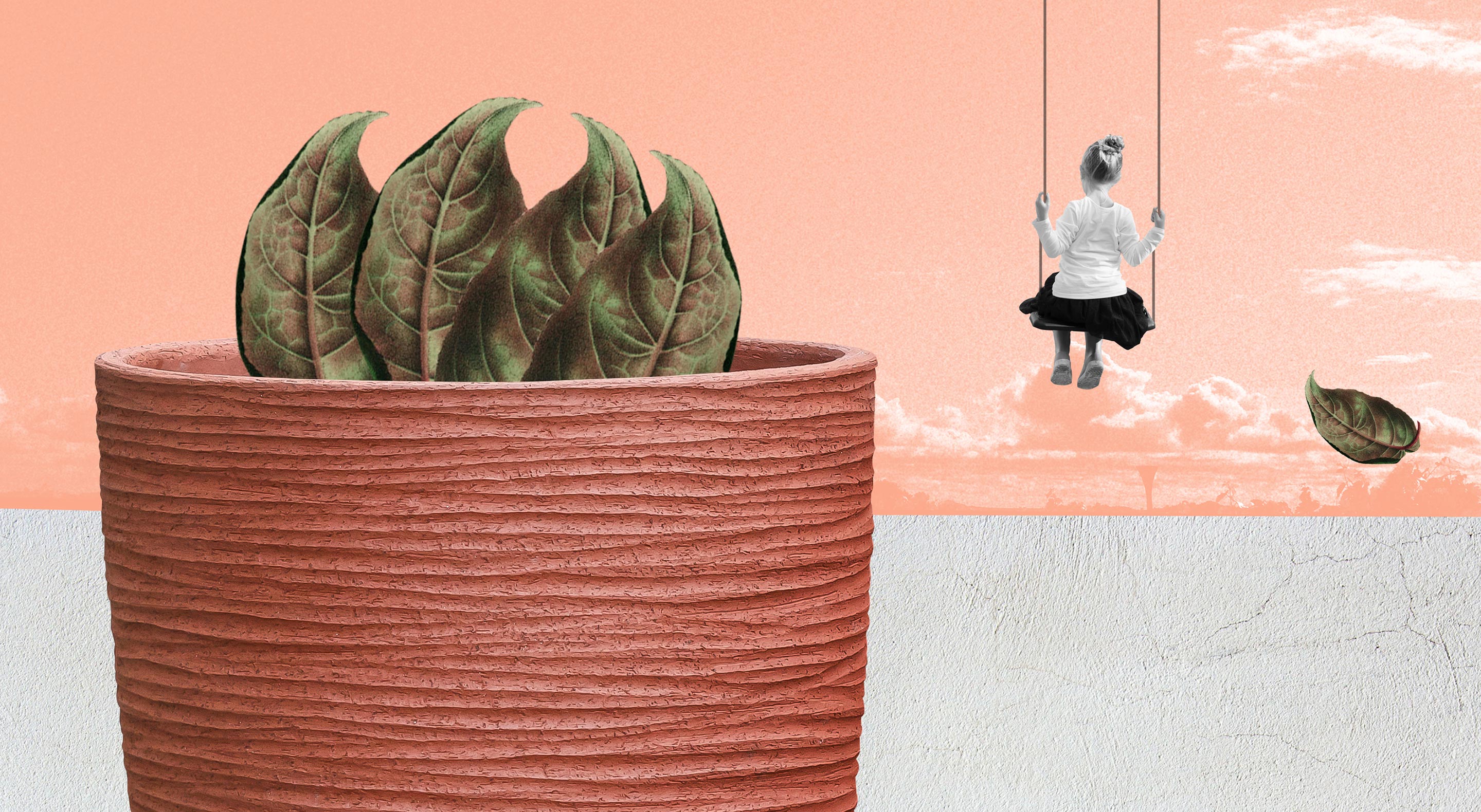Domani, the past and future of garden design
Published on 5 June 2021

Designed in Belgium and manufactured in Hungary, Domani’s ceramics give gardens a truly contemporary vibe whilst being rooted in age-old techniques.
At Domani, everything’s just a matter of time. For this Belgium-based garden ceramics firm, the natural materials are what sets the pace, along with the techniques used to transform them. Each pot is crafted by hand from clay and water, replicating gestures used the world over for 200,000 years. The workshop itself is located in the southern Hungarian city of Pécs, a place with a longstanding history of ceramics expertise, notably thanks to the world-famous Zsolnay factory. Each item is crafted from the same raw material, kaolin, which is extracted in Germany before being shipped directly to the workshop. The artisans then set to work shaping each piece, imprinting the clay’s smooth surface with the mark of their hands before leaving the pieces to air dry. Once dried and fired, they retain only the tiniest amount of moisture, making them highly resistant to the cold. “We are currently developing our own terracotta recipe,” explains Bart Bauweraerts, one of the brand’s founders. “It’s a never-ending process. Each clay delivery has a slightly different colour, so we need to continually make adjustments whenever a new batch arrives to ensure the finish is always the same.” Other pieces are produced using the Raku technique (Raku means “happy accident” in Japanese), a method that uses a thermal shock to create random cracks on the pottery’s surface. Domani also specialises in large-scale pieces made from metal, zinc and weathering steel, which are soldered and shaped in the workshop. And once again, far from being detrimental, time is the very thing that allows each material to develop its own protective patina, safeguarding it for years to come and helping it blend into its surroundings. The raw and complex lines of the weathering steel creations from designers such as Fabian von Spreckelsen and Vincent Van Duysen (who is also Molteni’s artistic director) turn the garden into an ultra-modern yet thoroughly organic world. “Our style isn’t intended to be ‘trendy’”, comments Bart Bauweraerts. “We ask our designers to come up with pieces that will stand the test of time for ten to twenty years.”
“Little by little, we drifted towards more natural materials”
Today, Domani is one of the rare firms capable of manufacturing and designing large-scale pieces destined for architectural projects and private gardens alike. But yet again, it was time that carved out that path. Domani was first established in 1992. In the early days, it was a simple import/export business dealing in garden pottery and items for florists. And like any other tale of entrepreneurship worth its salt, it all began in a garage, in this case in Belgium. Bart Bauweraerts had no market knowledge whatsoever, and with good reason: he’d just left his job as a butcher “as it wasn’t as glamorous as I’d first imagined it to be”, he says with a smile. He and Gino Van den Breen soon managed to attract custom from some world-famous names, such as French florist Christian Tortu and the Belgian Daniël Ost. As of 1999, they began exhibiting at Maison&Objet Paris, in the Scènes d’Intérieur zone, securing them contracts on every continent. “Maison&Objet Paris was, and still is, the best place to make sales in our industry. Items made from zinc were already hugely successful both in Europe and the USA,” Bart Bauweraerts recalls. “We then started exploring other materials, such as polyester, which produced some beautifully transparent effects. But little by little, we drifted towards more natural materials.” One of their main suppliers was a firm called Terra Ungheria, owned by Belgian Pieter Leemans. He was the man who had first started producing terracotta in Hungary back in 1994. The two firms decided to join forces, eventually merging in 2012, with the three men forming the perfect trio: Bart came armed with expertise in sales and marketing, Gino was proficient in finance and logistics, and Pieter excelled in the production side of things and handling the related budget. As time went by, metalwork crept into the workshop alongside the pottery, with artisans being trained up in-house. The three friends are constantly on the lookout for new, natural and timeless materials to carve out graphic silhouettes that straddle the line between gardening and design. And they certainly have time on their side.
By Caroline Tossan
Illustration ©Sarah Bouillaud